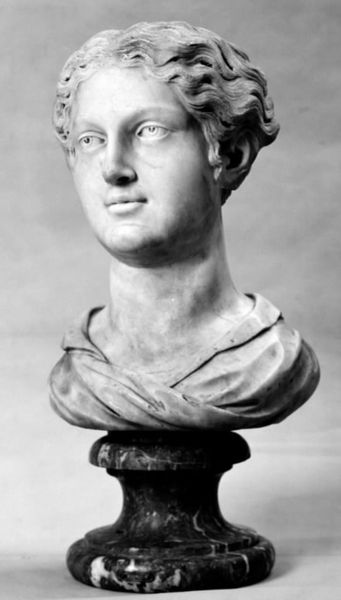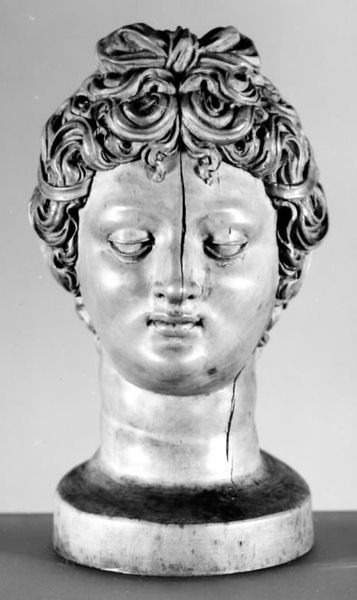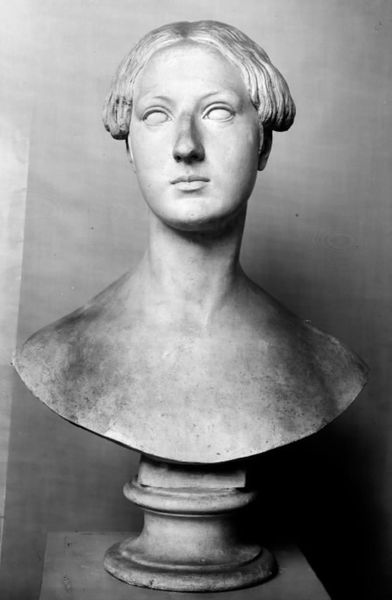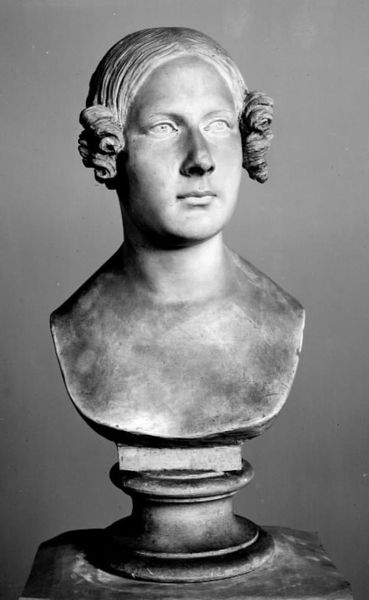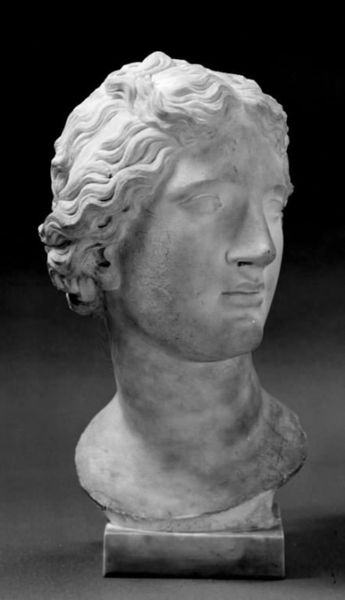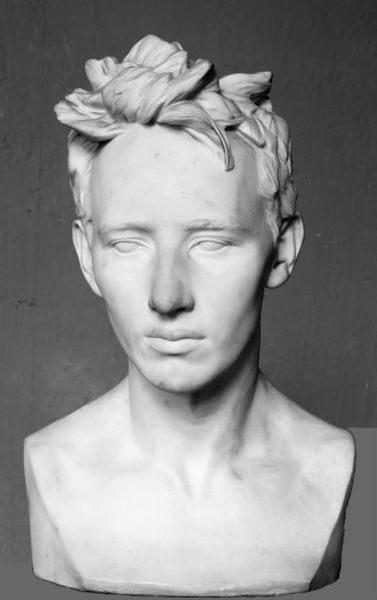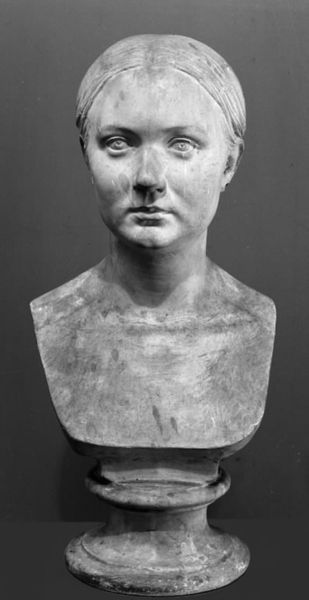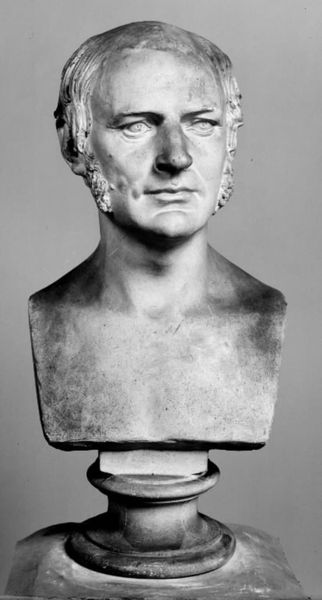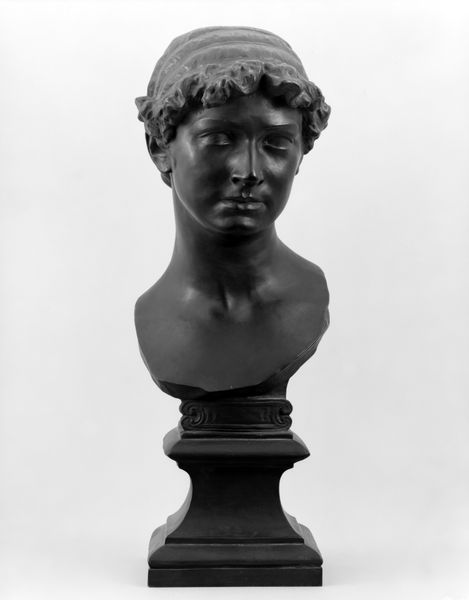
sculpture, marble
#
portrait
#
portrait image
#
sculpture
#
close up portrait
#
greek-and-roman-art
#
frontview face
#
sculptural image
#
figuration
#
male portrait
#
portrait reference
#
portrait head and shoulder
#
ancient-mediterranean
#
sculpture
#
black and white
#
marble
#
statue
Dimensions: 52 cm (height) x 23.4 cm (width) x 24 cm (depth) (Netto)
Curator: Up next, we have a marble bust, created in the 17th century by an unknown artist. The piece, simply titled "Romer," presents a close-up portrait of a male figure. Editor: He looks... burdened, doesn't he? There's a heaviness to the brow, a slight droop at the corners of the mouth. You can almost feel the weight of whatever historical drama he lived through etched onto his face. Makes you wonder what stories marble could tell if it could speak. Curator: Formally, the sculpture exhibits a remarkable attention to detail, particularly in the rendering of the subject's hair. Note the tight, almost uniform curls which contrast with the smoother surfaces of the face and neck. The contrast creates visual interest, drawing the viewer's eye. Editor: And that surface texture! It's amazing how the light catches all those subtle imperfections, little scratches and marks. It gives it such a feeling of authenticity, of lived history. It's like the sculptor wasn't just creating an image, but trying to capture a sense of presence, of spirit. Curator: I would add that the choice of marble as a medium is significant. Its cool, smooth surface lends an air of permanence and gravitas to the subject. Marble as a symbol connects to Classical traditions of idealized portraiture. Editor: Yes, it's imposing, certainly, but to me, it has this vulnerable quality. Like, this is a human being, stripped bare, offered up for observation. Think of the guy who sat for this. All his insecurities laid bare. Marble doesn't lie, does it? Curator: The lack of color in this monochrome image enhances the play of light and shadow, accentuating the form and structure of the sculpture, revealing an idealized beauty, in line with the aesthetic criteria of that time. Editor: Ultimately, the question arises: are we looking at the real person here? How much does the artist’s ego filter their image. Does any art ever truly reflect anything except the creator? Food for thought, as they say. Curator: Indeed, it’s this interplay between material presence and interpretive absence which defines the enduring interest of pieces like "Romer" here in the museum's gallery. Editor: So much to unpack. After all this scrutiny, I like to imagine old "Romer" having the last laugh in some storage archive! Thanks for indulging my ramblings.
Comments
No comments
Be the first to comment and join the conversation on the ultimate creative platform.


